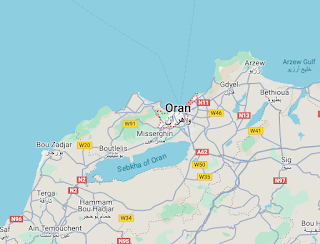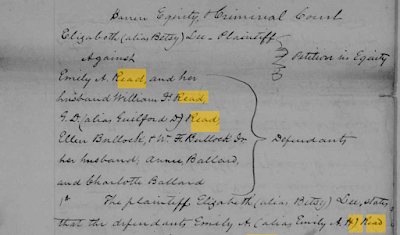The snapshot from the deed above gives a better picture of the wider family of my 4th-great-grandmother Priscilla McKinley. In May 1842, her grandfather Michael McKinley conveyed 100 acres in Spencer County, Kentucky in exchange for one dollar to Priscilla's mother, Mary as widow of William McKinley, and to her brothers and sisters. My last post showed the marriage bond from January 1807 between William and Mary. I believe William and Mary had at least the following children:
- Priscilla McKinley (1808-1872; married Enoch K. Holslcaw)
- Jonathan McKinley
- Sarah Sally McKinley
- Elizabeth A. McKinley
- James McKinley
- Lydia A. McKinley
- Mary McKinley
- George McKinley
- Martha McKinley
- Margaret McKinley
Widow McKinley was living on the land granted by Michael. The last section of the indenture shows that Michael intended for Mary to stay on the land for the rest of her life, free of interference even from her children.
 |
| FamilySearch. Spencer County Deeds. |
In the next deed on the page, Michael McKinley sold 100 acres to Mark E. Huston for $1056. Following the Huston indenture, Michael completed a deed for one dollar to his daughter, also named Mary McKinley. The property contained 88 acres along the Salt River in Spencer County, and was the property on which Michael lived. The land included an orchard of pear trees. Michael also mentions his step-daughter Sally McCullah, and his grand-daughter by son William, Lydia McKinley.
The indenture also conveyed a slave family, showing Michael McKinley was an enslaver. I assume this is a family. Named on the deed were: Oliver, an eight year old boy, and Frederick, three years old. The document also names Armistead and Matilda, who I assume to be the parents of Oliver and Frederick. Michael granted a half interest in Armistead and Matilda to Mary, along with any future children of Matilda.
A fourth indenture in the set from Michael was directed to his grand-daughter Lydia A. McKinley in exchange for one dollar. This covered the 34 acres of land Michael currently lived on, along the Salt River adjoining the property deeded to Michael's daughter Mary. The deed also granted to Lydia two boys, a twelve year old named Alexander, and a five year old named Felix. He also gave to Lydia the other half interest in Armistead and Matilda. I do not yet know what happened to this family.
The fifth deed in the set was made by Michael for grand-daughter Elizabeth McKinley, covering 45 acres of property.
A sixth deed was made by Michael with Abraham Vandyke, conveying one acre of land for ten dollars.
Six months earlier, on 1 December 1841, Michael completed a deed of sale with Enoch Holsclaw (my 4th-great-grandfather and the husband of Michael's grand-daughter Priscilla) in exchange for $227.54. This covered an interest in the land on which Priscilla's mother lived.
When looking on FamilySearch Labs' for Michael McKinley in Kentucky, I get over 340 entries. Some clearly are outside the time period when he was living, but most of the records so far seem to be connected to him. There's quite a bit more to follow in the Kentucky records.
Michael appears to have died in Spencer County, sometime around May 1845. Mary Beadle McKinley died about December 1850. Her daughter Elizabeth and husband Franklin Jones served as administrators of Mary's estate. I'll have more on this in a subsequent post, including a timely find mentioning Oliver, the slave of Michael conveyed to Mary and Lydia McKinley.














































